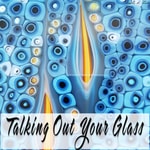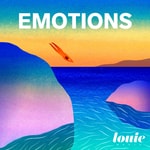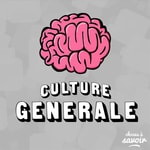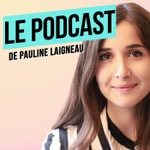Talking Out Your Glass podcast – Details, episodes & analysis
Podcast details
Technical and general information from the podcast's RSS feed.

Talking Out Your Glass podcast
Shawn Waggoner
Frequency: 1 episode/12d. Total Eps: 271

Recent rankings
Latest chart positions across Apple Podcasts and Spotify rankings.
Apple Podcasts
🇺🇸 USA - visualArts
07/07/2025#95🇺🇸 USA - visualArts
06/07/2025#59🇺🇸 USA - visualArts
05/07/2025#54🇨🇦 Canada - visualArts
03/07/2025#79🇨🇦 Canada - visualArts
02/07/2025#70🇨🇦 Canada - visualArts
01/07/2025#58🇨🇦 Canada - visualArts
30/06/2025#28🇫🇷 France - visualArts
17/06/2025#96🇫🇷 France - visualArts
16/06/2025#82🇫🇷 France - visualArts
15/06/2025#57
Spotify
No recent rankings available
Shared links between episodes and podcasts
Links found in episode descriptions and other podcasts that share them.
See all- https://www.instagram.com/p
11467 shares
- https://www.instagram.com/explore
8630 shares
- https://www.instagram.com/saltglass
23 shares
- https://racc.org/
62 shares
- https://www.metmuseum.org/
39 shares
- http://www.jamesjean.com/
14 shares
RSS feed quality and score
Technical evaluation of the podcast's RSS feed quality and structure.
See allScore global : 62%
Publication history
Monthly episode publishing history over the past years.
Ryan Thompson: From Blown Away 4 to Huron Street Studio
Season 9 · Episode 18
vendredi 6 septembre 2024 • Duration 01:05:03
Those who watched to completion the hit Netflix competition series Blown Away 4, will no doubt remember Ryan Thompson’s final gallery installation, Where You Are is Where You Need to Be. In all black glass, he created large vessel forms that served as sentinels to the recording of time. A blown glass pendulum in the center of the room recorded each moment in a footed reliquary of white sand below it. Its existential message spoke to the viewer silently. Permanently.
Thompson states: “This installation was created to satisfy a need to slow down, contemplate, and analyze my artistic path and my creative process. The unnatural pace at which Blown Away required its competitors to conceptualize and create caused a mental fatigue unlike anything I had ever felt. As difficult as this experience was, my journey as an artist has never been a straight line, and whether an experience has been positive or negative in the moment, in the end, it was exactly what it was supposed to be. Where You Are is Where You Need to Be is a space created to meditate and reflect on my trajectory both as a person and as an artist.”
Hailing from Sandusky, Ohio, near the shores of Lake Erie, Thompson and his sister Leah grew up with a love of the outdoors, sports, and all things creative. These interests were endlessly nurtured by their parents Jim and Kathy Thompson. Ryan’s passion for music began in the 5th grade when a group of friends with a band needed a drummer. His love for music and percussion remains today.
After completing high school, Thompson attended Bowling Green State University (BGSU), Bowling Green, Ohio, to study Visual Communication Technology, a degree program he found to be lacking in creative freedom and excitement. In his third year, he enrolled in an Intro to Glass Blowing course on the recommendation of a friend, and the trajectory of his life was altered forever.
For the next 3 years, Thompson poured every ounce of his energy into learning to control his molten material. The example of excellence in this craft demonstrated by his peers and instructors such as Scott Darlington set the bar of achievement high. He focused on fundamental skills in the form of vessel and goblet making, utilizing the Venetian processes and techniques he found most exciting and inspirational.
After graduation, Thompson began working at the Toledo Museum of Art Glass Pavilion as a studio artist and workshop instructor, as well as a production glassblower at many local glass shops in the birthplace of the Studio Glass Art movement. During his time in Toledo, the artist was fortunate to work with many world-renowned glass artists, honing his skills and expanding his network of colleagues in this community-orientated profession.
In 2018, Thompson accepted a production glassblowing position at Greenfield Village (The Henry Ford Museum) in Dearborn, Michigan. The job allowed Ryan to continue to broaden his skill set and expand on his experience as a production glassmaker. In 2021, he was promoted to shop lead and began coordinating the team’s production efforts, designing new product and maintaining the equipment that makes glass blowing possible.
After participating in Blown Away 4, on May 1, Thompson relocated back to Toledo, Ohio, and became the new owner and operator of Gathered Glass, a public glass studio that offers hand-made glass, glassblowing workshops, and public events in the heart of The Glass City. This opportunity is something he has dreamt about for the last decade and is hard at work making the business his own. Thompson’s partner, Kayla Kirk of Charmed Ceramics, is in the process of building a pottery studio on the second floor that will offer similar programming as well as hand crafted pottery for the home. The studio will be renamed Huron Street Studio and will celebrate its Grand Opening at 23 N. Huron St. in downtown Toledo, September 14, 2024.
Thompson will also participate in an Artist Residency at the Museum of Glass Tacoma from October 9 – 13, 2024.
Peter Layton and the Legacy of London Glassblowing
Season 9 · Episode 17
jeudi 22 août 2024 • Duration 01:08:21
Artist, pioneer, and mentor, Peter Layton is one of the founding fathers of British Studio Glass. He discovered the art form while teaching ceramics in the US in the mid-1960s and has played a major part in elevating glass from an industrial medium to a highly collectable art form. Most importantly, he gave it a home in the UK.
This month, London Glassblowing presents Glass Heaven, an exhibition uniting two exceptional glass artists: Layton and Tim Rawlinson. The show opened August 2 and will run through September 1, 2024. Representing the next generation of glass talent, Rawlinson combines innovative approach and vibrant compositions to offer a fresh perspective, challenging conventional boundaries and resonating with today’s artistic landscape. Layton, a veteran in the glass world, has captivated audiences for decades with his bold, expressive works. His 50-year journey from the studio’s beginnings on the Thames to international acclaim highlights his role in elevating glass art.
Born in Prague in 1937, Layton is one of Europe’s pre-eminent glass designers. He has directly influenced several of his country’s leading glassmakers and inspired many more. Arriving in England in 1939, there he began his education. While at grammar school, he met another boy who had also won the attention of his art teacher – his name was David Hockney. Layton attended Bradford Art College, then went to London’s Central School of Art and Design, to specialize in ceramics, where he was taught by several of the most respected potters of the time.
On graduating, Layton was offered a teaching job in Iowa University’s Ceramics Department. Once in the US, in 1966, he participated in one of the first experimental glass workshops with Harvey Littleton and was bewitched by the immediacy and spontaneity of hot glass. He went on to expand his connections and friendships on this side of the pond to include participating in a Los Angeles exhibition with Marvin Lipofsky, a San Francisco show with pop artist Mel Ramos, and an exhibition at The Art Institute of Chicago with Viola Frey.
Back in Britain, in 1969 Layton helped Sam Herman build the first furnace at the Glasshouse in Covent Garden, and he subsequently established his own small glass studio at Morar in the Highlands of Scotland, a Glass Department at Hornsey College of Art (Middlesex University) and, in 1976, the London Glassblowing Workshop in an old towage works on the Thames at Rotherhithe. In 2009 Layton’s London Glassblowing Studio and Gallery moved to much larger premises in Bermondsey. Since its opening, London Glassblowing has nurtured and produced some of the world’s leading glass artists, including (most recently) Elliot Walker of Netflix Blown Away fame.
Layton’s colorful and painterly works of glass art can be found in numerous public and private collections, both at home and abroad, including the Victoria and Albert Museum and the Fitzwilliam Museum, Cambridge. He has exhibited widely both nationally and internationally, receiving an Honorary Doctorate from the University of Bradford for his contribution to arts and crafts in Britain. Layton is also the founder of the Contemporary Glass Society, which is Britain’s foremost organization supporting and championing the work of glass artists, both established and new. A vigorous proponent of glassblowing as an art form, Layton has authored several books, become an Honorary Liveryman of the Worshipful Company of Glass Sellers, an Honorary life member of the Contemporary Glass Society as well as been given the Freedom of the City of London.
Layton has always taken inspiration from his environment, natural or manmade: a stone wall on a snowy day, the London skyline, or works by great painters. From a mere detail, a flash of a Klimt orange or a slick of oil on the Thames, he creates painterly works with a masterly use of color. The artist is inspired by whatever is around him. For example, during the winter of 2009, the heavy snow turned his long commute by train into an intriguing black and white world full of movement and texture, shaping his recent Glacier series. He has also created a number of conceptual pieces that reflect his specific concerns with issues such as ecology, religion and racial conflict.
Layton says: “A fellow artist recently described a piece that I had made for her by saying, ‘…it’s as though it holds all my travels in light.’ Lovely compliments like that spur me on. You never, ever create the perfect piece of glass and there are always new ideas, techniques and challenges to master. Glass is such an underrated medium – there is a fluidity and uncertainty about it that I choose to embrace rather than overcome. Every piece is an adventure.”
From October 8 – 13, 2024, PAD London returns to the iconic Berkeley Square in Mayfair, where London Glassblowing will be showcasing an extraordinary selection of work from their talented makers alongside designers and galleries from over 20 countries worldwide. To coincide with PAD and Le Verre, London Glassblowing is offering a series of exclusive events, providing a unique opportunity to explore and learn more about the captivating medium of glass.
For more information visit
https://londonglassblowing.co.uk/blogs/exhibitions/pad-london
Clifford Rainey: A Life's Travelogue in Cast Glass
Season 9 · Episode 8
vendredi 29 mars 2024 • Duration 01:14:00
Principally a sculptor who employs cast glass and drawing as primary methodologies, Clifford Rainey creates work that is interdisciplinary, incorporating a wide spectrum of materials and processes. A passionate traveler, his work is full of references to the things he has seen and experienced. Celtic mythologies, classical Greek architecture, the blue of the Turkish Aegean, globalization and the iconic American Coca-Cola bottle, the red of the African earth, and the human figure combine with cultural diversity to provide sculptural imagery charged with emotion.
A British artist whose work has been exhibited internationally for 50 years, Rainey was born in Whitehead, County Antrim, Northern Ireland, in 1948. He began his career as a linen damask designer and worked in William Ewarts linen manufacturers from 1965 to 1968. Later, the artist studied at Hornsey College of Art, the Walthamstow School of Art, where he specialized in bronze casting, and the Royal College of Art, where he received his MA and specialized in glass. Between 1973 and 1975, Rainey ran his own glass studio in London and won a commission for a small sculpture to commemorate the Silver Jubilee of Elizabeth II. In 1984, the artist moved to New York and established additional studios there.
Rainey’s sculptural work has been exhibited internationally including: The Ulster Museum in Northern Ireland, The Victoria and Albert Museum in London, The Kunstmuseum in Dusseldorf, Germany, The Millennium Museum in Beijing, China, and the Museo de Arts Contemporaneo in Monterrey, Mexico. His work is in the permanent collections of numerous museums including: The Irish Museum of Modern Art, Dublin, Ireland, The DeYoung Museum, San Francisco, California, The Los Angeles County Museum of Art, The Museum of Art and Design, New York, The Fine Arts Museum of Boston, and The Montreal Museum of Fine Art, Canada. Rainey has realized a number of public art commissions including: The Lime Street Railway Station in Liverpool, England, the Jeddah Monument in Saudi Arabia, and the 911 Communication Center in San Francisco. He is a recipient of the Virginia A. Groot Foundation Award, Chicago, and the 2009 UrbanGlass Outstanding Achievement Award, New York.
Balancing his commitment to studio practice with his desire to share knowledge, Rainey has lectured extensively around the world. He lectured at The Royal College of Art in London for seven years and was a Professor of Fine Art and Chair of the Glass Program at The California College of the Arts from 1991 through 2022.
On October 8, 2017 at 10:30 p.m., Rainey and his partner, Rachel Riser, were awakened by a neighbor’s frantic telephone call warning them that a wind-driven wildfire had kicked up and was blazing toward their shared Napa, California, residence. They needed to get out immediately. Far more devastating than the destruction of his home and studio was the complete loss of all the artwork on the property — not only two year’s worth of work for an upcoming exhibition, but the artist’s archive of drawings of every project he’d ever done, as well as a collection of his strongest work he was planning to donate to a museum.
Rainey still resides in Napa, California, and in March 2024 took time away from rebuilding his studio to participate in an artist residency at the Museum of Glass, Tacoma. There, he advanced ideas and processes originally seen in works he lost to fire.
Kim Thomas aka Zii Glass
Season 6 · Episode 23
jeudi 15 juillet 2021 • Duration 55:32
A prolific borosilicate flameworker producing highly recognizable works in functional and sculptural glass, Kim Thomas aka Zii is changing the face of flameworking. From detailed and realistic human teeth and severed finger pipes to her latest kinetic sculpture, the artist is redefining what is possible at the torch. From January – April, 2021, recent works The Cloud Capturing Apparatus and The Cloud Riding Contraption were exhibited in Glass in The Expanded Field at the Hunterdon Art Museum, Clinton, New Jersey.
Thomas also participated in Hunterdon’s companion symposium, Pipe Art: Understudied Glass, which considered the glass pipe as a fluid work of art fundamental to the art history of glass. Celebrated artists Dan Coyle and Luken Sheafe, whose artist name is SALT, presented their intensely wrought, figural, and in the case of Thomas, sometimes kinetic, pipes. Joined by Susie J. Silbert, Curator at the Corning Museum of Glass, these artists further contextualized their work within the burgeoning field of pipe-making.
Following graduation from the Rhode Island School of Design with a BFA in ceramics, Thomas attended The Make Up Designory and later worked as an assistant to award-winning special effects make-up artist Kevin Haney. In 2009, when she answered an advertisement for a studio apprentice in North Hollywood, California, Thomas discovered her passion for flameworking. With lessons from her studio mates and observation she quickly learned the medium and turned her practice into a career.
Now making work from the Urban Pheasant Glass Studio, Detroit, Michigan, Thomas is a former professor of glass at Salem Community College in New Jersey, and guest instructor at various schools and studios including Penland School of Craft, Snow Farm, and the Pilchuck School of Glass. She has demonstrated her techniques at The International Flameworking Conference and The Glass Art Society Conference, and exhibits her work in museums and galleries across the United States. Her attention to detail and regard for realism have resulted in a highly recognizable aesthetic signature. In a world where the inherent beauty of glass is regularly exploited, Thomas relies on a gritty realism to set her work apart. Few, if any, artists create similar work.
As Thomas continues to work on The Escape series – she prepares to teach classes at Penland School of Craft, July 18 – August 2 and Snow Farm from August 8 – 13. Both classes are full with waiting lists. She will also participate in an emerging artist residency at Pilchuck Glass School, October 6 – November 22, 2021.
Nicknamed after her classic 1978 Camaro Z28, Zii believes the most creative and engaging work is influenced by the things that find their way into your dreams. She says: “It’s easy with pipemaking to get pigeonholed into making one type of piece –- if you’re doing it as a living, you have to please your fans and make things they will buy. As an artist, if you want to grow and develop, and have some sort of message, you can’t just make one thing over and over.”
Norwood Viviano
Season 6 · Episode 22
vendredi 9 juillet 2021 • Duration 01:18:25
Using tools of mapping and materials of industry Norwood Viviano makes installations and sculptures that consider various social and environmental factors leading to population changes in American cities. His most recent series, Re-Cast Cities, continues his exploration of the cross-sections of geography, cartography and history, merging urban landscapes with the symbols of industry that have fueled their booms, busts and builds.
Heller Gallery’s March 2021 Re-Cast Cities exhibition documented the first eight pieces made in this series focusing on Detroit, Houston, New York, Philadelphia, Pittsburgh, Portland, (OR), Toledo and White Mills, (PA). Curator and writer Sarah Darro called the project “a radical reconsideration of cartography that inflects Viviano’s ongoing analysis of the rise and fall of American manufacturing with an experimental energy geared towards the future.”
Viviano received a BFA from Alfred University and an MFA in Sculpture from the Cranbrook Academy of Art. His work is represented in the collections of major museums in the US, Europe and Asia. His work has been shown at the Venice Architectural Biennale (2014), Houston Center for Contemporary Craft, Houston, TX (2013); Museum of Fine Arts, Boston (2015), Frederik Meijer Gardens and Sculpture Park (2016), Bellevue Art Museum (2016), Renwick Gallery of the Smithsonian American Art Museum (2016), MOCA Jacksonville (2017), Boise Art Museum (2018) as well as at Stanze de Vetro in Venice, Italy (2020). Recent solo exhibitions include Grand Rapids Art Museum in Grand Rapids, MI (2015); Heller Gallery, New York, NY (2011, 2014, 2018 and 2021); Chrysler Museum of Art, Norfolk VA (2016) and Corning Museum of Glass (CMOG), Corning, NY (2017-18). Viviano is an associate professor and sculpture program coordinator at Grand Valley State University in Michigan.
Awards and residencies include the 2019 Corning Museum of Glass, David Whitehouse Research Residency for Artists; visiting artist residencies in 2017 and 2010 at Museum of Glass, Tacoma, WA; inclusion in CMOG’s New Glass Review #16, #22, #33, #36, and #38; a 2016 fellowship at Wheaton Arts and Cultural Center – Creative Glass Center of America, Millville, NJ; the 2014 Pilchuck Glass School John H. Hauberg Fellowship; the Venice Biennale, Best Exhibition Award, from Global Art Affairs Foundation; and the Center for Scholarly and Creative Excellence, GVSU, Catalyst Grant for Research and Creativity.
The result of Viviano’s 2017 Visiting Artist Residency at the Museum of Glass, Cities Underwater focused attention from population and cartographic shifts of the past to the future. The artist conceived the project to visualize the dramatic loss of land predicted to occur in the next 500 years in areas that some 127 million Americans call home. The adaptation needed to mitigate the impending changes that will affect our lives, history and culture is massive. The Cities Underwater work is aimed at keeping this conversation alive and not forgoing it for short-term convenience or gain.
The installation was comprised of 16 sets of nesting glass cylinders, which represent 16 coastal cities in the United States. Using existing LiDAR data and scientific projections, Viviano showed the projected loss of land mass due to sea level rise in Boston, Galveston, Miami Beach, Miami, Mobile, New Orleans, Newark, New York, Norfolk, Philadelphia, Sacramento, San Francisco, Savannah, Seattle, St. Petersburg and Tacoma. Each set was accompanied by vinyl cut drawings and animation, which provided additional data.
For Mining Industries, Viviano utilized digital 3D computer modeling and printing technology in tandem with glass blowing and casting processes to create work depicting population shifts tied to the dynamic between industry and community. By showing how landscapes and populations move and are modified as a result of industry, his work creates a 3D lens to view that which is invisible or forgotten. His use of blown glass forms and vinyl cut drawings are micro-models of macro changes at the regional, national, and international level.
Viviano says: “I find myself looking at the world as a surveyor – telling stories through objects. Stepping back and researching how pieces fit together gives me the opportunity to consider the impact of the component parts. Conversations with specialists in a range of disciplines — historians, urban planners, demographers, climate scientists and statisticians — deepen my engagement with the subject matter and the complexity of my work. My artistic intention is to better understand our place in time by focusing on land use through pictorial imagery and on industrial growth and decline through population studies that also ask questions about the present and future of communities. My installations and objects encourage individuals to make connections and ask questions about the interconnectivity between their and other communities.
He continues: “My material choice of glass is meant to demonstrate the fragility of populations. I hope my work asks people to examine their own histories of migration, from personal and communal standpoints, just as it continues to help me navigate and explore my own.”
Viviano will teach a one-week 3D printing and mold making workshop at Anderson Ranch Arts Center, Snowmass, CO, July 19-23, 2021. For more information
Dan Friday
Season 6 · Episode 21
vendredi 25 juin 2021 • Duration 01:01:35
Creativity was fostered in Dan Friday by his family from an early age. Growing up immersed in the rich cultural heritage of the Lummi Nation meant that making things with his hands was a regular activity. Typically working with simple themes and forms, the artist often employs subtle silhouettes when making his glass totems. His more narrative work reflects a personal expression or means of processing a life event, often with an underlying statement. His latest works will be on view at the Museum of Northwest Art, La Conner, Washington, in Future Artifacts, on view July 3 – October 10, 2021.
Friday says: “As the recipient of the Bill Holm Grant from the Burke Museum, with my sister I have been studying Coast Salish artifacts in their archives. It is a surreal experience to hold items of your oldest known family members, even see their handwriting on treasured belongings. With all of the information, images, and data I have already catalogued, I hope to make inspired pieces of glass: the Skexe (Coast Salish wooly Dog) Blanket Panels, and The Sxwo’le (Reef Net) projects, to mention a few. It will be my way to document not only my family’s history, but the artwork of the Coast Salish people. Glass is a medium that will survive millennia, and a great way to tell a story to future generations. It is, metaphorically, a contemporary painting on the cave wall.”
He continues: “The preparation for this show at MoNA has already given me great satisfaction, not just the physical act of producing these works, but the connections I have made within the beautiful and resilient Coast Salish community.”
https://www.monamuseum.org/future-artifacts
A lifelong resident of Washington State’s Puget Sound region, Friday maintains an independent glass studio in Seattle. He has worked for Dale Chihuly at the Boathouse Studio since 2000 as a glass blower collaborating with other studio staff on Chilhuly glass designs. This experience helped Friday expand and perfect technical skills in glass working and increased his insight into the relationship and interaction between artist and the public. Working at Pilchuck Glass School since 2006 as a teacher, gaffer, and coordinator for the hot shop and wood and metals departments, Friday has fabricated and facilitated works for international artists. He has also assisted James Mongrain since 2009 on various glass blowing projects, domestically and abroad.
Working at Tacoma Glass Museum since 2004, Friday is part of a specialized team of glass sculptors, demonstrating a variety of methods to educate the public about the medium of glass. He has also collaborated and assisted prominent artists in the creation of major glass art commissions and installations, including James Drake, Nicolas Africano, Wendy Maruyama, and Charles Ledray, to name a few. As personal assistant for Paul Marioni, Friday cast and cold worked glass tiles for a large-scale installation.
Friday has taught at the University of Washington, Pilchuck Glass School, and the Haystack Craft Center. He has been awarded residencies at the Museum of Glass in Tacoma, the Burke Museum in Seattle, the Corning Museum in New York, and the Dream Community in Tai Pei, Taiwan. He is the recipient of the Bill Holm Grant, the People’s choice award from the Bellevue Art Museum, and the Discovery Fellowship through the Southwestern Association for Indian Arts.
Represented by Blue Rain Gallery (Santa Fe), Stonington Gallery (Seattle), Ainsley Gallery (Toronto), Habatat (West Palm, Florida), and Schantz (Stockbridge, Massachusetts), Friday’s work in glass is contemporary in format while maintaining Native American qualities. Cultivating his artistic vision with strong influence from his indigenous roots in the Pacific Northwest, the artist allows craft, form and idea to drive his work from conception to object.
Ian Chadwick
Season 6 · Episode 20
jeudi 17 juin 2021 • Duration 01:08:09
Many teachings describe sacred geometry as the blueprint of creation and the origin of all form. This ancient science explores and explains the energy patterns that create and unify all things, and reveals the precise way that the energy of creation organizes itself. It is said that every natural pattern of growth or movement comes back to one or more geometric shapes. Ian Chadwick expresses his homage to sacred geometry by kilnforming colored glass strips that are deconstructed and reconstructed into symmetrical patterns similar to those seen in the rose windows of cathedrals and mandalas.
Chadwick says: “The inspiration behind my glass work comes from a love of optical art, traditional pattern-forming and an interest in sacred geometry – in particular the meditation symbols known as mandalas. Mandalas contain many of the principles important in the esoteric practice of geometry, utilized by craftsmen for centuries in the design of cathedrals and stained glass windows. In my most recent work, I am embodying the essence of mandalas into the patterns present within each individual hand-made piece of glassware. The techniques I use are similar to mosaic work, each individual point of color is an individual piece of glass arranged in a manner which produces a kaleidoscopic, op-art effect. The combination of colors, which I carefully choose, are designed to complement the pattern formed within the glass.”
Born on the Isle of Wight and after moving to a few locations, Chadwick finished his schooling in Banchory near Aberdeen, Scotland. He graduated from Gray’s School of Art, Aberdeen, in 1994 with an honors degree in Fine Art specializing in sculpture. Final artworks produced for his degree show in 1994 utilized glass and plastics to create sculpture which had op-art qualities and were deeply concerned with geometry and symmetry – artistic interests that continue today. In 1996 the artist pursued his interest in glass and worked for a number of years at a stained glass studio in Scotland, eventually working as a freelance window designer and traditional glass painter.
In 2001, Chadwick moved to Timperley in Cheshire, where over the next two years he taught himself glass fusing and kiln-forming techniques. In 2003, the artist established a business producing traditional glass craft and kiln-formed glass art. Since then, he has developed an extensive portfolio of contemporary glassware, including items such as kaleidoscopes, glass bowls, glass platters, wall art, glass vases and other glass interior home wares. To survive lockdown, Chadwick launched a collection of smaller, more affordable bowls on his Instagram page. Initially planning to number each bowl CVD-1, CVD-2, up to CVD-19, the demand was so high that he is now working on CVD-72 and has a waiting list of over 50 people.
An internationally recognized kiln-formed glass artist and instructor, Chadwick is the winner of the Worshipful Company of Glass Sellers Award at the British Glass Biennale in 2019. He recently released a 30-minute YouTube tutorial, which attracted more than 10,000 views in 2 weeks. No longer viewable online, it is in the final stages of production and will be released by Bullseye Glass Co. later this year as part of the company’s new online teaching program. Attracting a loyal following among the US kiln-forming scene, Chadwick also has a strong collector base in the US boro glass scene with pieces of his work in the collections of well-known functional glass artists including Eusheen, Kaj Beck, Marcel Braun, Adam Reetz and Calmbo.
Chadwick’s ritualized process of making is employed to bring the essence of mandalas into the symmetrical glass patterns, which have become his unique aesthetic signature. As his work progresses, he continues to investigate different pattern forming techniques and new ways to engage with the viewer. He says: “The production of the patterns requires a high level of accuracy and patience. Once formed, they are fired in the kiln up to three times in total and go through extensive cold-working using diamond abrasives to ensure the best quality finish. Each piece of glass I manufacture is a unique work of glass art.”
Dan Coyle aka coylecondenser
Season 6 · Episode 19
jeudi 10 juin 2021 • Duration 58:08
Menacing monkeys. Peeled bananas. Bad-tempered bears. Uniquely original Munnies. Daniel S. Coyle’s whimsical, toy-inspired aesthetic in concert with mind-blowing skills on the torch have earned the artist a hefty 116K following on Instagram. The artist recently celebrated 10 years of being a full-time pipe maker with an exhibition at Ziggy’s in Huntington Beach, California. Decade Arcadia featured new work, collabs and early pieces from Coyle’s personal collection.
He says: “Often my work is playful in nature and can remind you of toys. I guess I like to bring the viewer (or user) back to their childhood and also remind them to not take life so seriously. Why pipes? Making an object into a pipe will allow someone to bond with that object. They will have experiences with it, develop a relationship with it, and in time it will become more than a piece in their collection—it will become sentimental.”
Coyle began blowing glass in 2003 while taking a workshop with artist Jerry Kelly. As his interest in the craft developed, he pursued education in glass working techniques at Salem Community College, the only school in the US with a program dedicated to scientific glassblowing. Graduating in 2006, the artist began his career as a laboratory glassblower for a chemical company, leaving after five years to pursue his artistic vision in glass pipes. Coyle’s work has been displayed in galleries around the world, and has been seen in print and web publications including Vice, Huffington Post, NY Times, and in the books This Is A Pipe and his self-published Munny Project book. Now residing in Western Massachusetts, he works alongside some of the state’s top pipe makers.
In March 2021, Coyle participated in a virtual seminar sponsored by Hunterdon Art Museum, Clinton, New Jersey. Pipe Art: Understudied Glass considered the glass pipe as a fluid work of art fundamental to the art history of glass. Sometimes demoted by law or public opinion to the category of “paraphernalia,” the artwork of the pipe nonetheless defies its sometimes categorization as sub-sculpture. Celebrated artists Kim Thomas and Coyle, whose works were featured in the accompanying exhibition, and Luken Sheafe, whose artist name is SALT, presented their pipes. Joined by Susie J. Silbert, curator at the Corning Museum of Glass, the artists further contextualized their work within the field of pipe-making.
Post Covid, 2021 is shaping up to be an exciting year for Coyle, including a residence at Pilchuck in July. In September, you’ll find the artist at Molten Art Classic, Southern California’s premiere glass flameworking event. Team leader, Adam Whobrey, also known as Hoobs, handpicks some of the top borosilicate glass artists in the world to create an exquisite one-of-a-kind piece together at Classic 33 Studios in Huntington Beach. It is the largest collaborative art event to unify top borosilicate glass artists from around the world, all adding their respective influences and unique flair to the collective piece.
Tim Carey and Justin Monroe
Season 6 · Episode 18
vendredi 28 mai 2021 • Duration 01:12:00
The marriage of Tim Carey’s art and glass making skills with Justin Monroe’s unique approach to presenting both on film has resulted in rewards, accolades and attention in both the filmmaking and glass worlds. Following the release of Monroe’s award-winning documentary, Holy Frit, the artist and filmmaker have teamed up again to start a new company called Vitreonics, dedicated to education through content creation around the medium of glass. Their goal is to reach and teach the newer generations of artists about the wonders of glass with a fresh new approach to presenting online education in an entertaining and fun format. Their first classes were released last week through Bullseye Glass Co.
Find out more at https://classes.bullseyeglass.com/classes-events.html?instructor=1908
Holy Frit shared the wild and winsome journey of Carey and Judson Studios as they realize a church’s vision to create the world’s largest window of its kind. With plenty of human drama, creative travail, and colorful characters, including Narcissus Quagliata and folks from Bullseye Glass Co., it is a must-watch for art lovers in general and glass lovers especially. Winner of the Audience Award for Best Documentary Feature at the 2021 Slam Dance Film Festival and winner of Best Documentary Feature at the 2021 Florida Film Festival, Holy Frit is described by Monroe as follows:
“Carey is a talented, yet unknown Los Angeles-based artist. He is also a bit of a jackass, who uses wit and humor to charm you into forgiving his flaws. As a Hail Mary, Tim and the company he works for, Judson Studios, bluff their way into winning the commission to make the world’s largest stained-glass window of its kind, beating out 60 companies from around the globe. The problem is, Tim has no idea how to make his complicated design.
“After a desperate search, Tim comes to learn about someone who might have the answer… a world-famous, Italian glass maestro, named, Narcissus Quagliata. From the moment Narcissus arrives, Tim quickly learns that his talent and humor can only take him so far. If he has any chance to make it to the end of the project and potentially achieve greatness, he has to confront his personal demons of self-importance, artistic merit, business instincts and spiritual insecurities. He has to put down his ego and submit to the life and artistic lessons of a complicated master, who has already preceded him in greatness. As this documentary unfolds, the clash of two big personalities slowly transforms into the forging of a lasting friendship. Both mentor and protégé come to realize it will take their combined focus to overcome this 3-year race-against-time, the complications of a $1.2 billion class-action lawsuit, and the many obstacles that emerge when attempting a masterpiece. Even though the story takes place within the niche world of an ancient art-form, it gives a universally fun, heartfelt and sometimes comedic look into the drama of any human endeavor which is greater than the sum of its parts.”
Monroe has directed, written and produced numerous projects, both dramatic and comedic, since his career began. His feature film credits include the award-winning comedy, The Rock ‘N’ Roll Dreams of Duncan Christopher (Director / Producer), and the thriller, The Unraveling (Co-Writer / Producer). He has also written, directed and produced a wide variety of short films and client work, striving to achieve a unique aesthetic and a connection to beauty, fun and authenticity in every project he’s a part of. After studying film in Oklahoma and Los Angeles, Monroe and his wife decided to trade tornadoes for earthquakes, and headed into a full-time life in the golden west. They reside with their two children in Pasadena, California.
Carey continues his mission to bring glass to the forefront as an image-making medium through continued exploration of techniques that he and Quagliata developed at Judson Studios. Tim Carey Studio, established in Compton, California, on July 1, 2018, moved to south Pasadena, where the artist currently creates projects and commissions in his hybrid fusing and glass painting process. These include recent works The Cast, Beneath the Surface and work with Judson Studios on the South Pasadena Library windows.
Listen to the full podcast on Carey at https://talkingoutyourglass.com/tim-carey-studio/
Listen to the full podcast on Judson Studios’ Resurrection window at https://talkingoutyourglass.com/judson-resurrection-window/
Cat Burns
Season 6 · Episode 17
mercredi 19 mai 2021 • Duration 01:00:06
Whether creating her signature Nesting Bowls, a dazzling murrine sculpture Windows of Truth, or an unforgettable glass fashion statement Forbidden Twizzlers, Cat Burns captured viewers’ hearts and minds as a contestant on Blown Away 2 – Netflix’s glassblowing competition show produced by marblemedia with the support of The Corning Museum of Glass (CMoG). As runner-up of the competition, she scrambles to keep up with the overwhelming interest of the general public in supporting her art through acquisition.
A defiant artist who uses flamboyant, sarcastic humor to illustrate her internal narrative, Burns touched the Blown Away 2 audience with her honesty and vulnerability. She cultivates her work very slowly and uses it as a visual diary, creating audacious imagery as a way of communicating and synthesizing the often perplexing, manic experience of living with depression. The work explores the delicate strength of glass as a final object, as well as its use as a personally therapeutic tool. By destigmatizing personal demons, her work explores what it means to “go a little crazy.”
Some of Burns’ glasswork centers around her failing eyesight and how this impacts her world as a maker. She has needed glasses since age two for extreme nearsightedness, and her mother was almost completely blind by age 40, so losing her vision was something the artist understood as a possibility all along. For the past few years, retinopathy has plagued her, forcing a reevaluation of exposing the eyes to melting glass.
As a production glassblower Burns put herself through school, earning her associate degrees in Glass Fine Art and Glass Craft and Design from Salem Community College, Carneys Point, New Jersey. She subsequently worked as a full-time assistant to other glass artists in the Philadelphia area and at The Studio at CMoG, where she learned from the constant stream of master glassblowers. She says: “I got paid to learn first-hand from people at the top of their field, and I could not be more grateful for the lessons the Museum has taught me.”
Aside from making her own work, Burns loves to teach and has helped teach classes all over the country in places like Pittsburgh, Penland, Salem, Corning, Pilchuck, and Snow Farm. A full-time glassblower since 2009, the artist has travelled the world, working for many years with CMoG’s Hot Glass Show at Sea team.
Making work at The CMoG Studio, Burns sells a lot of her glass at The Museum Shops. Though 2020 began with mass cancellations of all of her scheduled work, The Shops presented the artist with the idea of taking a color concept she had developed earlier and reworking it to fit the Pumpkin of the Year. After a few inceptions, Burns landed on the right rainbow for the 2020 Unity Pumpkin. The first order in June was for 50 and by the end of the year, she had made almost 600.
Burns says: “They just spoke to everyone; that need for some color, joy, and unity. The rainbow felt a little defiant and unifying at the same time, racking up millions of TikTok views and totally changing my year. The love the TikTok community had for the Unity Pumpkin was completely unexpected and overwhelming at times, and because of that, I went from losing all my work to growing my business to where it is now in just five months. I will forever be grateful to my TikTok followers.”
Though her one-month 2020 residency at CMoG has been postponed due to COVID-19, meanwhile Burns works hard to keep up with demand for her work. After Blown Away 2 was released, the artist’s order limit on production pieces was met in only five days.
From functional glass bongs to Tits and Glass sculptures that reference the artist being told she was only valued in the hot shop for her tits, to Vagina Sculptures, which allow one to reclaim their sexual past – this is not your Grandma’s glass! “Through humor we heal and find strength,” says Burns.









